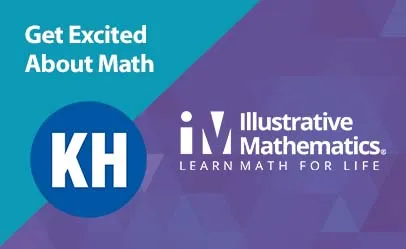Get Excited About Math
January 7, 2022
 By:
Laurel Curtiss
By:
Laurel Curtiss
Factoring reverses the multiplication process, it helps us to understand more about the equations we are working with, and it is an integral part of business, scientific, and engineering operations. When I first learned about factoring, I learned that my first step should look like an “M” (shown below), and my final answer should include two sets of parentheses. I never learned why or when knowing how to do this would be beneficial; in fact, I am learning the real-world applications for factoring for the first time today as I am sitting here writing this.
It can be difficult to commit to the mathematical process when the processes themselves seem shrouded in mystery. Why do we expect students to become instantly committed to learning and applying the concepts learned in class when so little background information is provided to them during the learning process? There  seems to be a gap in the teaching process that Illustrative Mathematics is seeking to address. The curriculum creates confident students who know, use, and enjoy mathematics. Starting with elementary school, IM places lessons in the context of a greater mathematical story that spans across units and familiarizes students with the importance and relevance of math in our world today.
seems to be a gap in the teaching process that Illustrative Mathematics is seeking to address. The curriculum creates confident students who know, use, and enjoy mathematics. Starting with elementary school, IM places lessons in the context of a greater mathematical story that spans across units and familiarizes students with the importance and relevance of math in our world today.
In middle school, the curriculum continues to engage students by presenting them with the opportunity to solve problems in real-world contexts, and each high school classroom activity begins with “the launch”, which is a step that helps teachers make sure students understand the context of the problem. Once that connection is built, we must begin to address the other piece of the puzzle: helping students understand why they need to learn. Nowadays, we always have a calculator in our pocket and access to the Internet constantly at our fingertips. Gone are the days of pondering trivia games, facts, and pointless questions for hours on end. Now, with the use of a search engine that determines what you are saying even if you mistype every single word, the answer to nearly every question is mere seconds away.
So why is it important for students to learn how to do math? Can’t the calculator, DESMOS, and the Internet do everything for them? Math is used in so many aspects of life, from figuring out how much paint is needed to cover a room, to determining what the better deal is at the grocery store, to presenting yourself as competent and knowledgeable around others. The real-world applications for math are endless, and most of the time, it can be easy to forget just how integral mathematical understanding is to our everyday lives. It is much easier to remain mathematically motivated when students can see connections between what they are learning in class and the world they live in.
See what gets your students excited about math using Illustrative Mathematics K-12 curricula.
SOURCES:
https://greedhead.net/how-do-you-use-factoring-in-real-life-situations/
